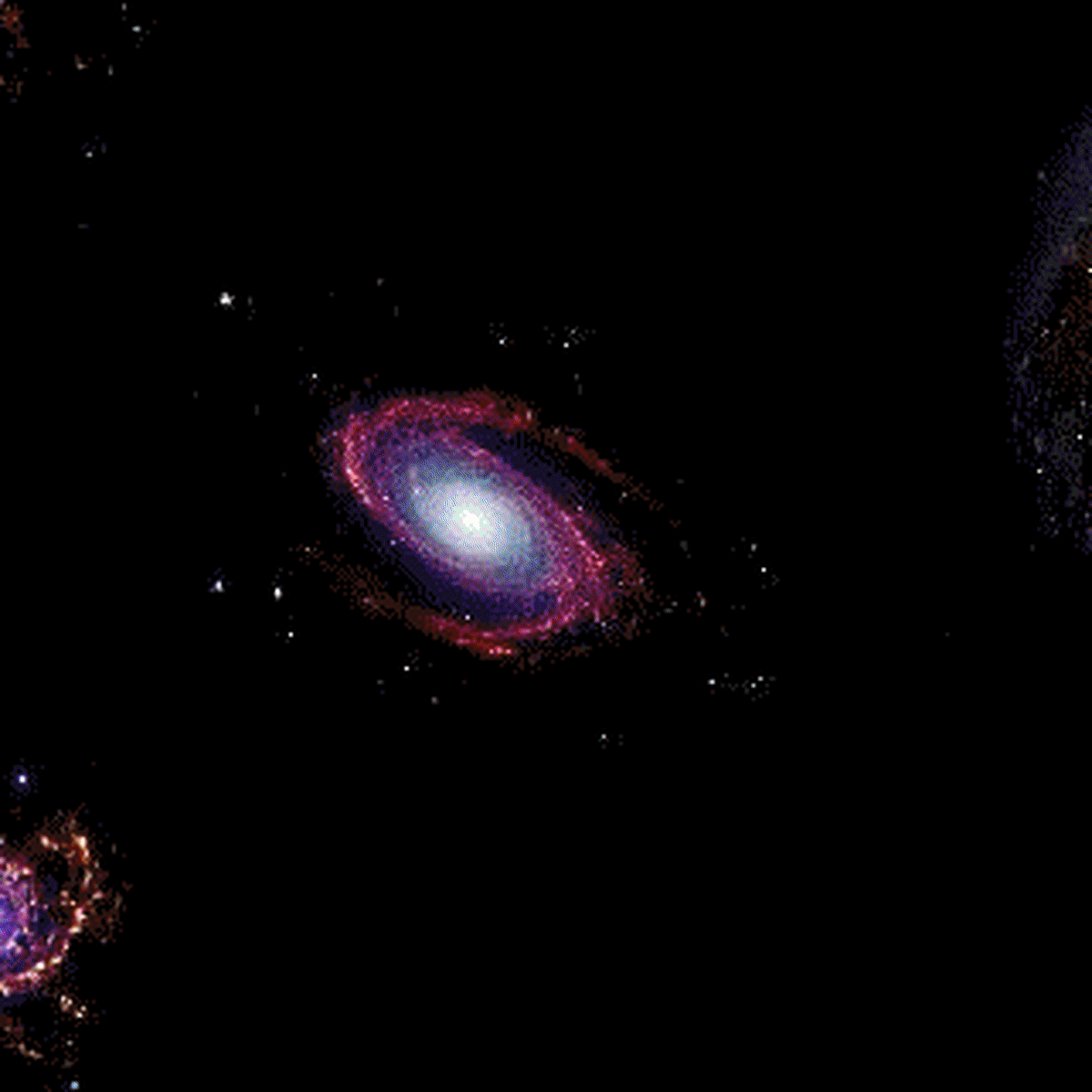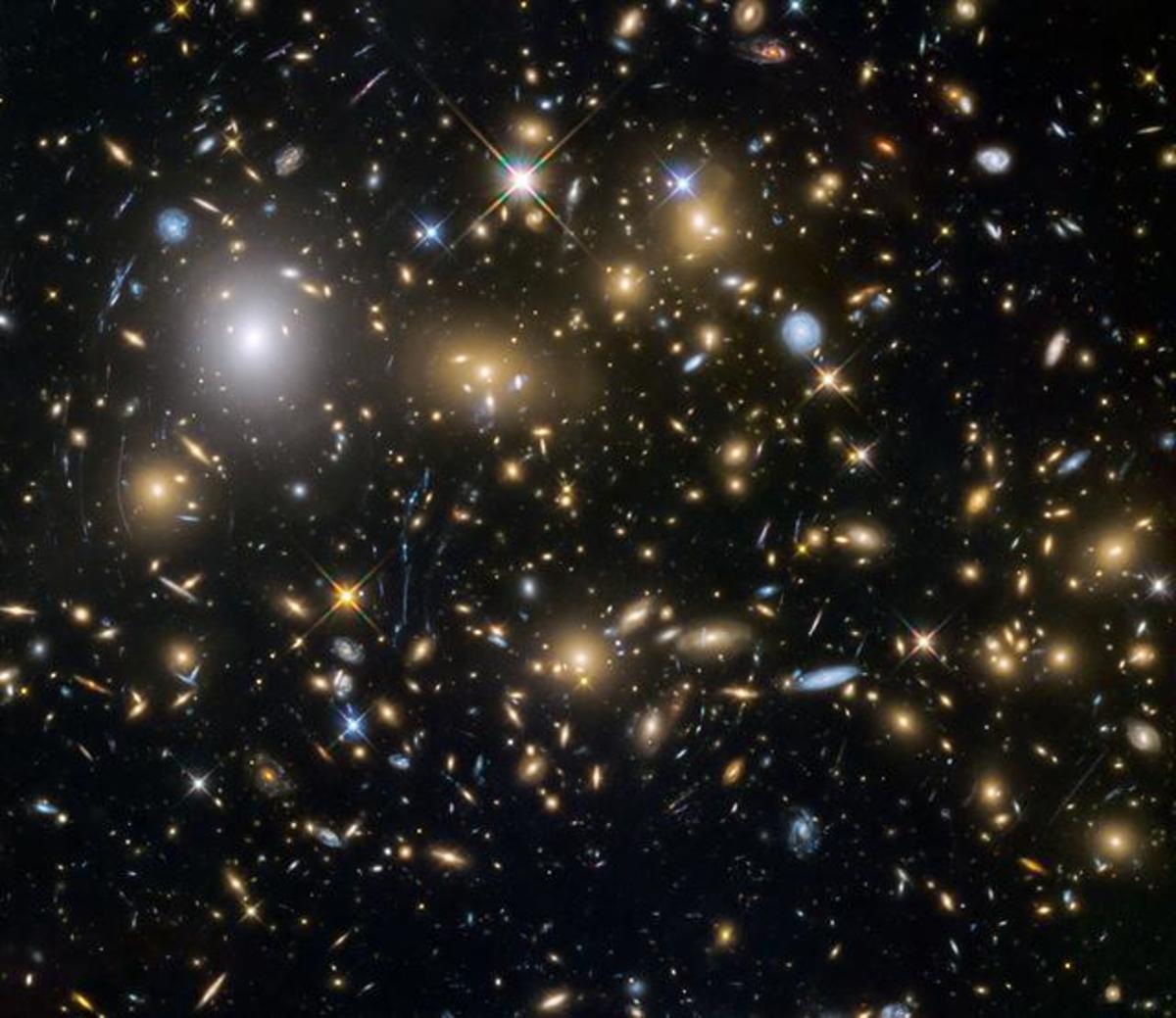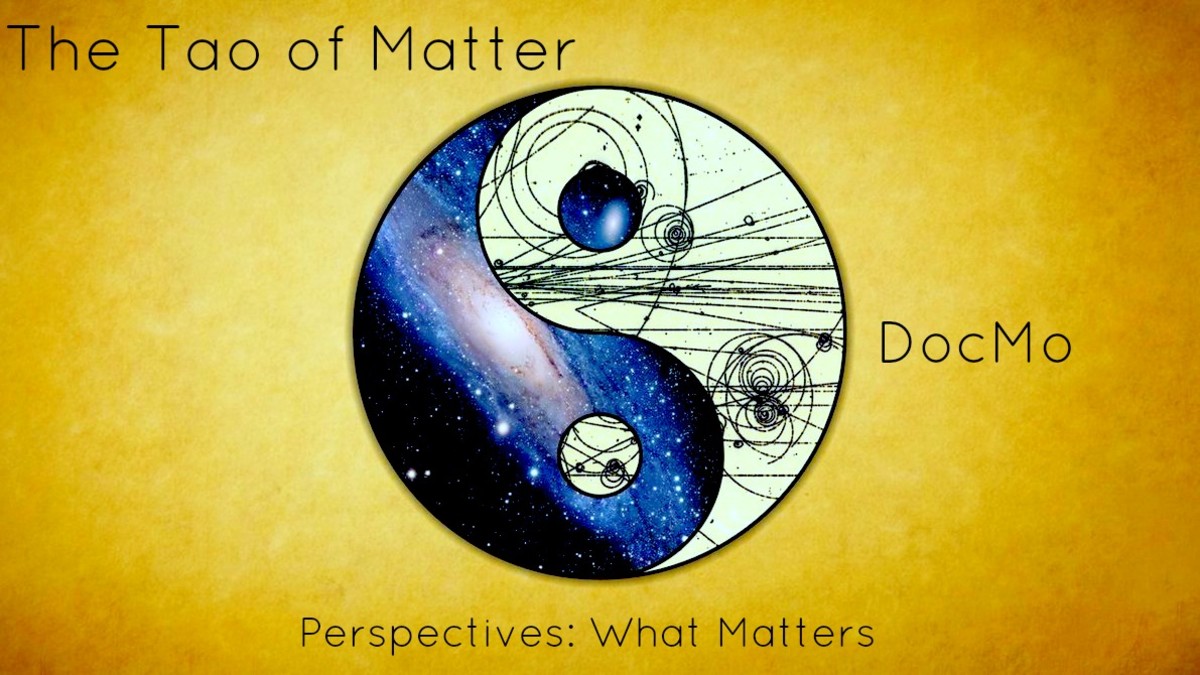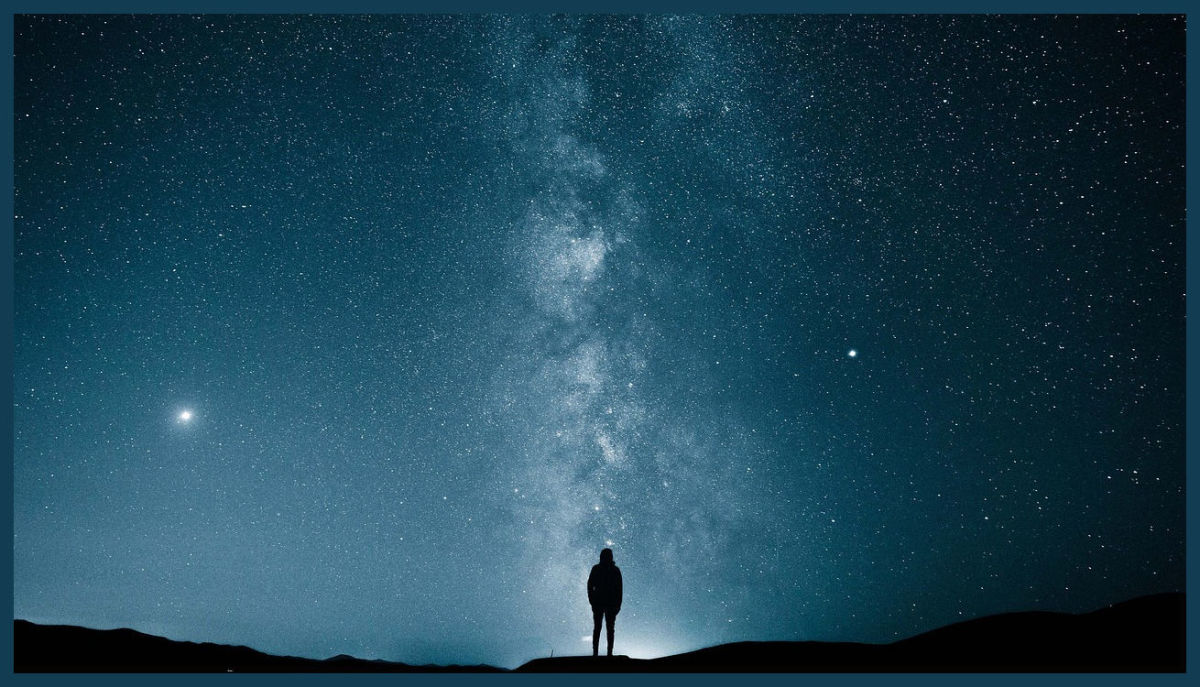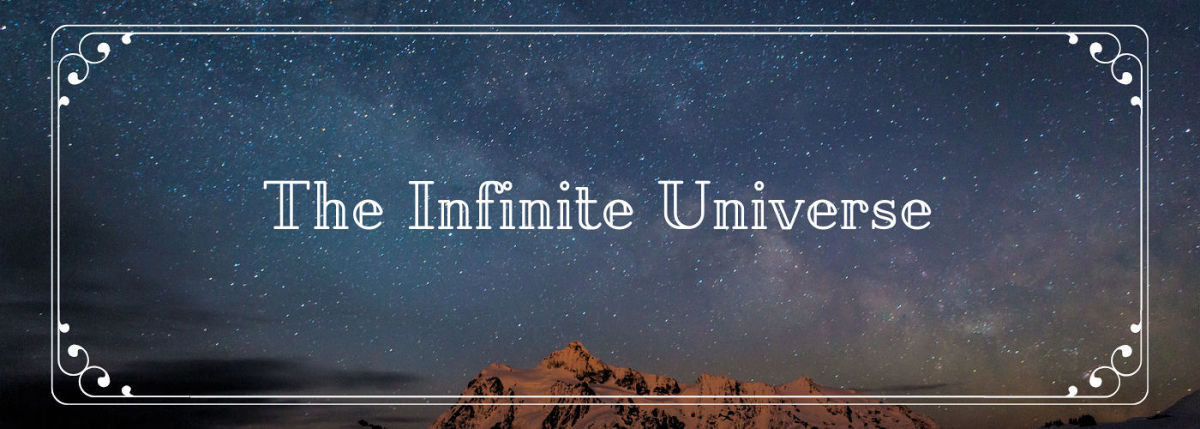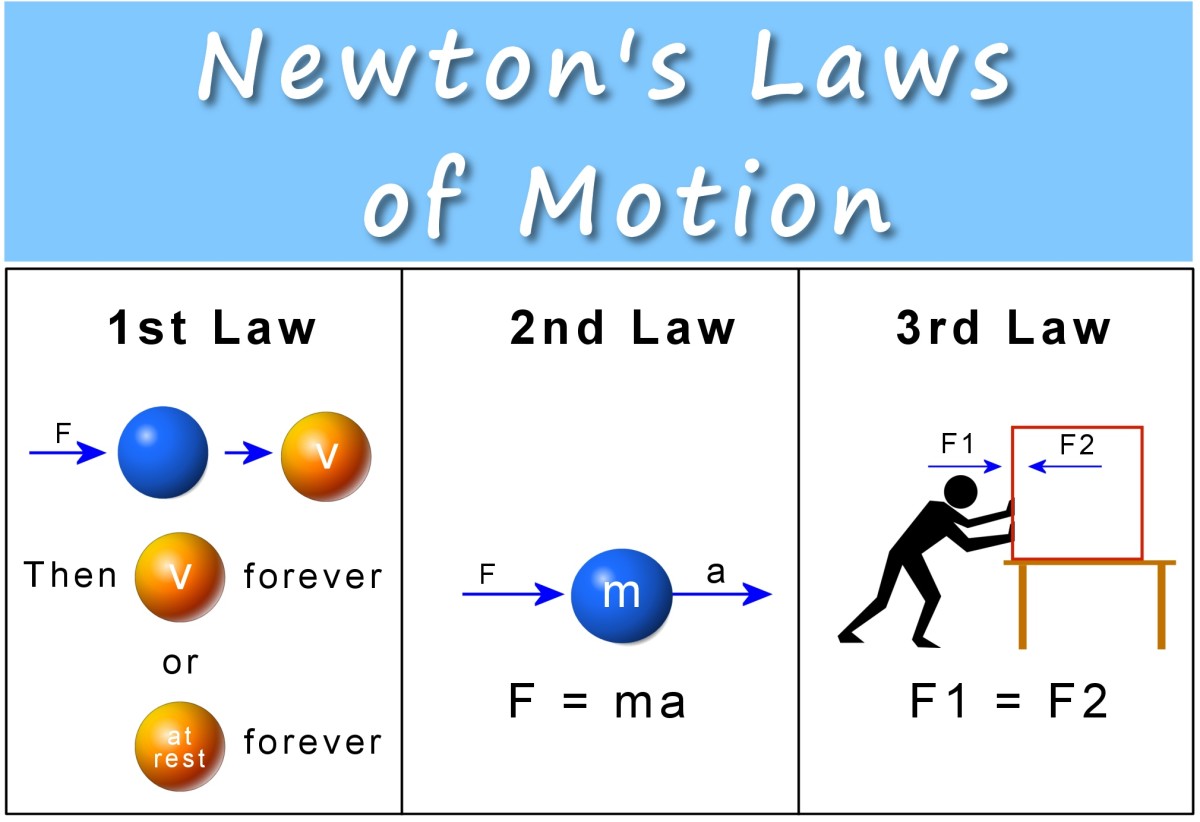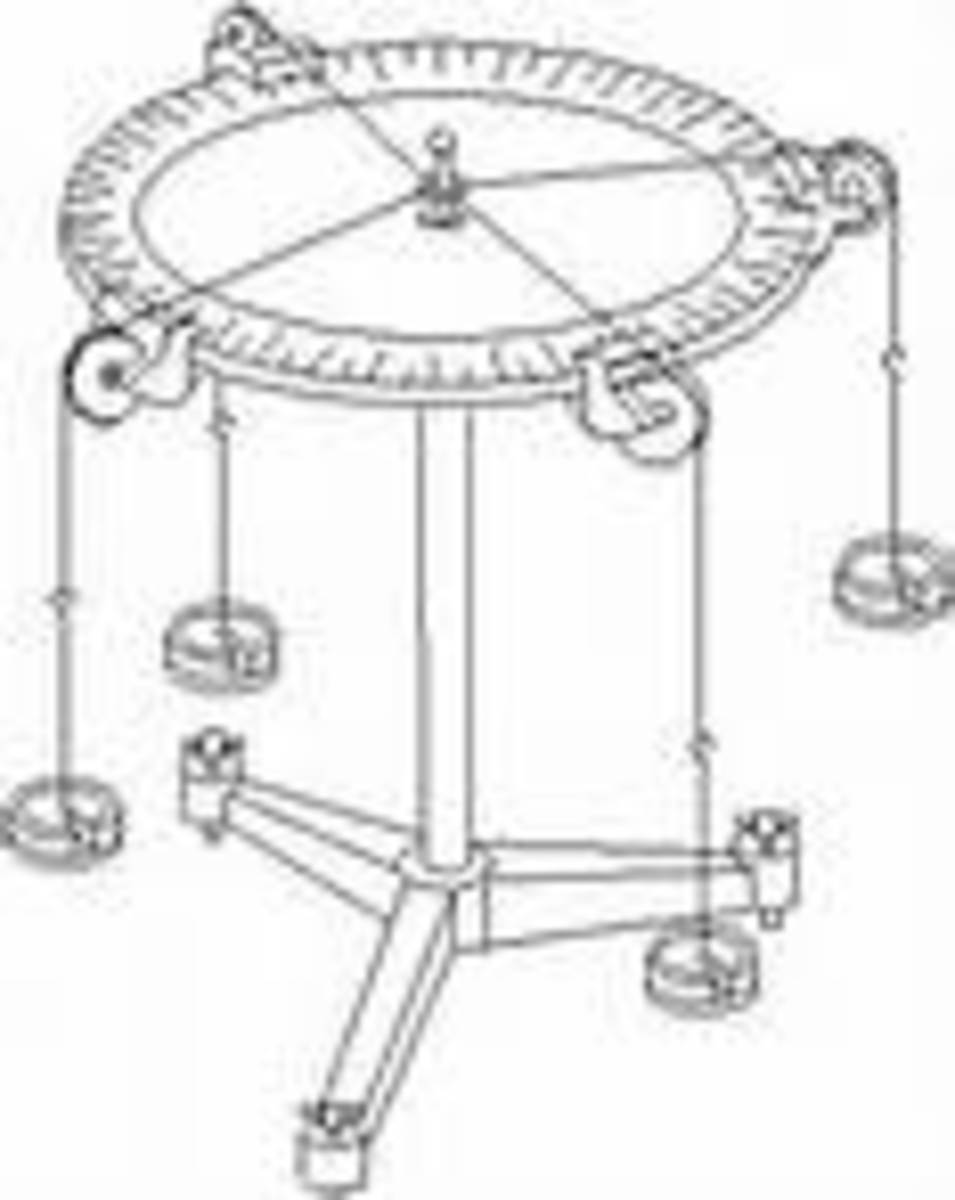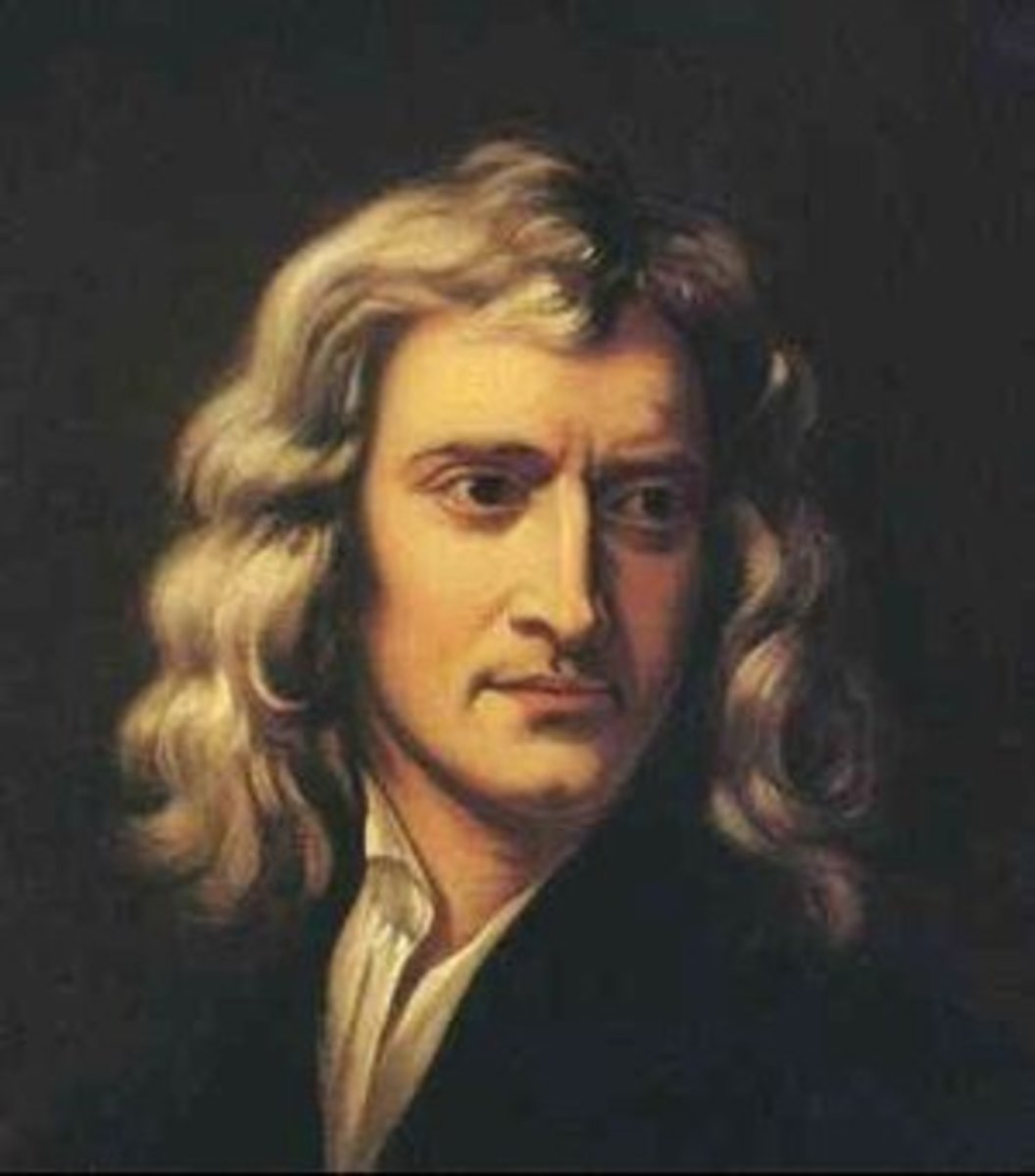Dark matter and Dark Energy
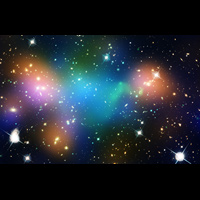
Einstein realized that gravity was a problem in a static universe. He calculated that if the universe was static gravity would have pulled all the matter in the universe together long ago. So since that was not the case there had to be a reason it wasn’t. There had to be a force that kept gravity in check.
He developed what became known as the cosmological constant. What caused that constant wasn’t clear, but Einstein suspected that it had something to do with space itself.
He had already realized that gravity was probably not a subatomic particle, but rather that it was due to the topography of space. Space to him was like a fabric. It can be warped and bent, and objects like planets do exactly that, causing gravity.
But shortly after he came up with cosmological constant, Edwin Hubble discovered that the universe was not static, and in fact it was expanding. This was a shock to most people. It took some time before enough experiments confirmed his discovery. But mainstream science finally had to accept it.
When Einstein accepted it he commented that the cosmological constant was his biggest blunder. If the universe was expanding then it wasn’t needed.
Now, Einstein has been the target of not a few scientists who have tried to prove special and or general relativity wrong. Quantum mechanics tried to show that gravity was a particle; but it failed and has to use Einstein’s version of gravity. In fact nothing about Relativity has been shown to be wrong. Some aspects have been corrected in minor ways, but essentially it stands in tact as the way the universe works.
His only error was the cosmological constant. Or was it?
Shorty after Hubble’s discovery it became obvious that if the universe was expanding, all the matter/energy in it had to have been closer together at one time. Thus the Big Bang was theorized.
Again gravity was of great interest. The Big Bang explained why the universe was expanding, but gravity would eventually pull it back in on itself if there was enough matter in the universe. This theory told us the universe would end in a big crunch. But scientists being what they are, had to know if it was correct. If there was not enough matter to cause a contraction, it would eventually just slow down and become static.
The problem started when scientists discovered that not only was there not enough matter to cause a big crunch, the universe was not slowing down. The shocker was: the universes expansion was gaining speed. The big question was: why, and more importantly how?
This discovery came first in 1998 from the data gathered by the Hubble telescope from an ancient supernova. The data clearly showed that the universe had been expanding more slowly in the distant past than it is today. No one knows exactly why this is happening, but people have started looking seriously at the cosmological constant again. Perhaps it wasn’t an error after all.
To date there are three main competing hypothesis as to why the universe is expanding faster than it ever has. One is that Einstein was correct when he postulated that the universe had energy inherent in it. As the universe expands and space increases, this energy inherent in it also grows/increases with it. This does not break conservation laws because the energy is inherent in space itself, and it is not like the energy we have to see as “normal”. The more space is created the more energy is created. The more energy is created the more space is created. Hence why the universe continues to accelerate rather than slow down.
If true, the cosmological constant would be correct after all.
This model is called the Lambda-Cold Dark Matter model and is currently the standard model due it’s close agreement with experimental observation.
There was a second hypothesis along these lines which came from Quantum mechanics. Like Einstein it postulates that space is not empty. There is a constant activity called quantum fluctuation. That part seems to have been proven to be the case.
But when the numbers came in they were so far from explaining what was going on that the hypothesis was deemed invalid as the reason why the universe is accelerating. So QM came up with the idea that dark matter might be ancient particles created as part of the big bang that are unlike those we already know about.
However, experiments done with Hubble in 2011 pretty much ruled that out. The experiment is discussed at http://www.nasa.gov/mission_pages/GLAST/news/dark-matter-insights.html
The second major hypothesis was a return to Aether. A dynamic fluid that acts in the opposite way normal matter/energy acts. The trouble is that there just isn’t anything to base the idea on. It’s still just speculation. No actual evidence exists to back it up and the original version of this theory was proven false a long time ago. However, the new version called Quintessence is dynamic. it is like Einstein’s theory in that the Aether would be a scalar field which could increase in repulsive energy over time, causing the accelerated expansion of the universe.
A third hypothesis is that Einstein’s version of gravity is wrong, even though it has proven time and again not to be. However, no one knows what a new theory of gravity would look like. It’s a long shot. But who knows? Bottom line that a lot more data needs to be collected and a lot more experiments need to be performed before we have a good answer.
Still another set of hypotheses derived through string theory suggests that perhaps our universe is being swallowed by a giant super black hole. There are several version of this universe eating monster, but again there is no experimental evidence to suggest that any of these hypotheses are correct.
So how are we sure dark energy/matter exists even though we don’t have a clue what it is? Well in this case dark matter shows up in the way the universe acts when we study the way galaxies move and interact. In 1992 Dr G Paal wrote a paper about the how galaxies are distributed irregularly. He needed to use the cosmological constant to explain how it was that these specific patterns of irregularity were in fact regular patterns. In other words the irregularities were consistent throughout the universe, not anomalous at all.
The existence of dark matter seems to be shown in the cosmic microwave background and its patterns. So we are pretty sure it exists. It explains the gravitational observations on galaxies perfectly. It also explains the flat spiral arm shape of galaxies as well as being shown to exist in what is known as gravitational lensing.
So while we are not certain of what it is, we can figure out how much of it there has to be for it make galaxies behave the way they do. And we have figured out that dark matter comprises 25 % of the universe.
Because it is not made up regular atomic particles it does create photons when it interacts. It does not interact much if at all with regular matter.
Dark energy is another kettle fish. So far it seems to comprise 70% of the universe. Again, it does not seem to directly interact with normal matter much if at all.
So together, dark energy/matter comprise 95 % of the universe. The other 5 % is Normal” energy/matter. 5%.
It’s astounding to contemplate.
Now another strange consequence of Einstein’s space/time theories is that while matter cannot be pushed to the speed of light, there is no such natural restriction imposed on space expansion. Good thing too because some recent measurements suggest that galaxies farthest away from us are moving faster than light. Of course they aren’t strictly speaking; the universe is just cumulatively expanding faster than light.
But don’t worry. Even though the universe is expanding, this does not affect galaxies. While in a few billion years we won’t be able to see other galaxies, ours will remain intact because of gravity. In essence we will have our steady state universe, or at least the appearance of it.
After all, no evidence will remain that other galaxies existed. The chances for visiting other galaxies is going to come to an end. Well, depending on what discoveries we make by then.


